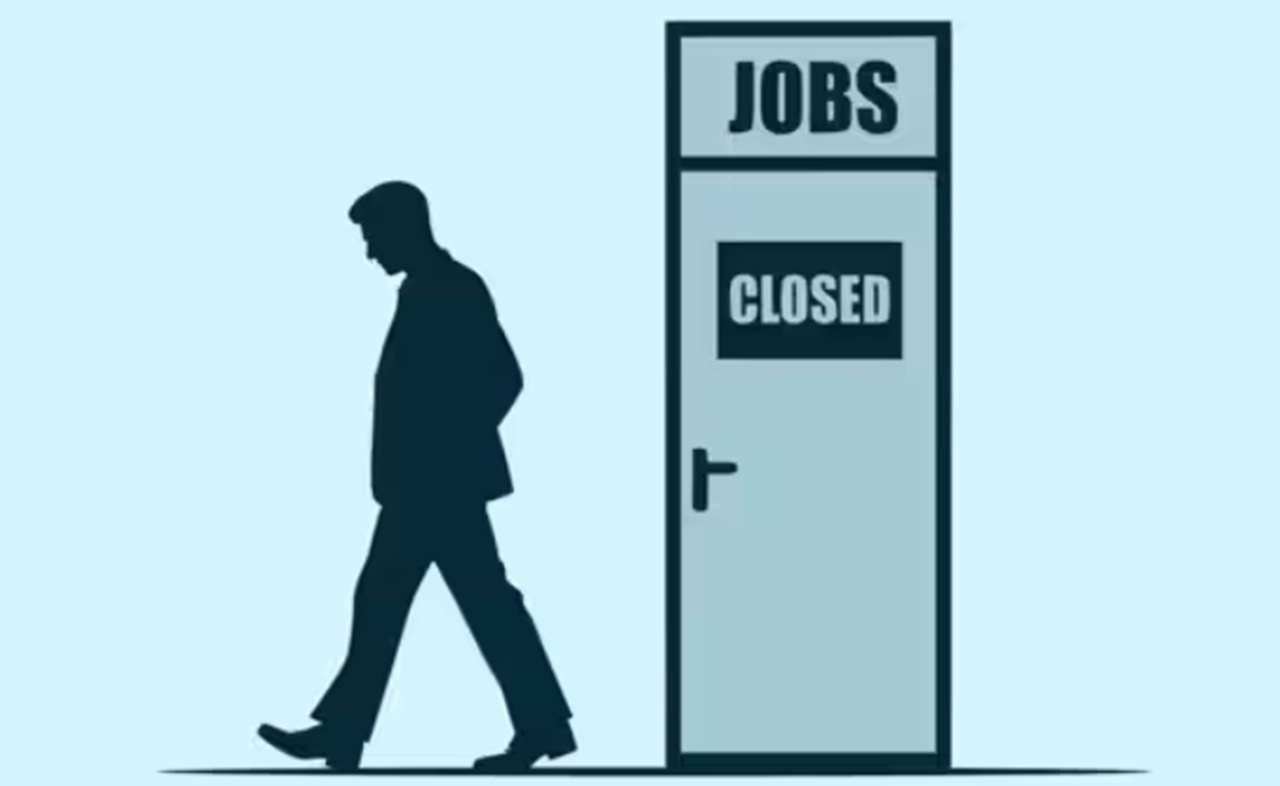In a jarring turn of events over the past year, some of the world’s most powerful and established firms have embarked on sweeping job cuts. From global tech behemoths to legacy consumer goods giants, the message is clear: corporate survival is now being redefined by agility, cost discipline, and strategic pivoting. Among them, Nestlé’s announcement to eliminate 16,000 roles has emerged as a potent symbol of this new reality.
What’s driving this wave of layoffs? And what does it mean—for employees, for industries, for the future of work?
In this deep dive, we explore the recent layoff spree across seven flagship companies, examine the underlying forces at play, and map out what might lie ahead for the global job market.
The Layoff Landscape: Who’s Cutting, and Why
Nestlé: 16,000 Jobs on the Line
Nestlé, the Switzerland-based fast-moving consumer goods (FMCG) powerhouse, has declared plans to trim its workforce by 16,000 over the next two years—approximately 6 % of its total human capital. The cut cuts across white-collar roles as well as production and supply chain functions. The new CEO, Philipp Navratil, frames this as a reset: “The world is changing, and Nestlé needs to change faster,” he commented publicly.
The aim: save about 1 billion Swiss francs in costs.
TCS (Tata Consultancy Services)
India’s tech giant TCS has already shed 6,000 employees—roughly 1 % of its global staff—and signals that as many as 6,000 more may follow. The catalyst? A broader transformation of IT services driven by generative AI. As demand shifts, redundancies in conventional roles are becoming inevitable.
Amazon
Amazon is reportedly preparing to cut nearly 15 % of its workforce in certain departments, including human resources and consumer business units. As the e-commerce giant deals with rising costs, margin pressures, and changing consumer behavior, trimming headcount is seen as a necessary—though painful—lever.
Though smaller in absolute numbers compared to others, Google recently laid off around 100 employees, primarily in design-related roles. This signals a rebalancing toward efficiency and reallocation of talent in high-growth areas like AI, cloud, and infrastructure.
Accenture
Accenture is repositioning itself through a sweeping restructuring, with plans to cut more than 11,000 roles. The firm is rethinking business models, services, and talent deployment in a world increasingly shaped by digital transformation and automation.
Salesforce
Salesforce slashed roughly 4,000 customer support roles, reducing their support workforce from 9,000 to 5,000. The company cites automation, AI-driven tools, and cost rationalization as key enablers behind the decision.
Microsoft
Microsoft has cut more than 15,000 jobs in 2025 alone and further removed about 2,000 underperforming employees. CEO Satya Nadella attributes the layoffs to a rigorous evaluation of divisions based on performance, strategic alignment, and long-term growth forecasts.
Why This Giant Layoff Wave? Key Drivers
To understand why so many leading firms are downsizing now, we need to look at several converging factors:
1. AI & Automation Redefining Work
Artificial Intelligence, robotic process automation, and Machine Learning are reshaping roles across industries. Tasks once done by humans—especially repetitive or middle-tier jobs—are gradually being handled by machines. Companies are retrenching to realign with this new reality.
2. Inflation & Macro Uncertainty
Rising input costs, supply chain disruptions, and macroeconomic uncertainty (geopolitical tensions, interest rate hikes) are pinching margins. Firms are cutting headcount to stabilize operations, boost profitability, and conserve capital.
3. Strategic Refocusing
Many companies are pivoting their business models—shifting from legacy lines to newer growth verticals (cloud, AI, sustainable products). With that shift, roles tied to old models may no longer be relevant.
4. Overexpansion & Talent Excess
During boom periods (e.g., post-COVID recovery), many companies overhired. Now, with challenging growth prospects, they are correcting course—slimming down redundant capacity.
5. Investor & Market Pressure
Publicly traded firms feel the heat to deliver consistent growth and margin improvement. Layoffs are a visible, swift instrument to demonstrate cost discipline in the eyes of investors and markets.
The Human Cost: Lives Behind the Numbers
Every layoff announcement hides human stories—displaced professionals, uncertainty, and career recalibration. The emotional, financial, and psychological toll is real: households lose income, people must reskill, and local economies may suffer ripple effects.
Moreover, When large firms downsize, it often triggers secondary job losses: vendors, contractors, support services, and regional ecosystems feel the shock.
Organizations must handle this responsibly: fair severance, mental health support, reemployment assistance, reskilling programs, and transparent communication.
Patterns & Trends: What This Layoff Wave Tells Us
Let’s step back and identify patterns:
Tech and services sectors are most exposed. The bulk of cuts are in IT, customer support, design, middle management roles.
White-collar roles are not immune. It’s not just factory jobs—office jobs, corporate roles are under scrutiny too (e.g. Nestlé’s white-collar cuts).
Automation is a leading accelerator. In companies like Salesforce and Google, AI tools are replacing human-intensive functions.
Staged layoffs over time. Companies are not cutting everything at once but phasing reductions over quarters or years to maintain operations.
Combination with strategic reinvestment. Cuts are often paired with hiring in growth areas (e.g., AI, R&D, cloud).
Global reach. These companies operate across regions—so layoffs often ripple across geographies, including US, Europe, India, etc.
What It Means for Workers & Job Seekers
If you’re a professional today, what do these moves mean?
Reskill, Upskill, and Embrace Lifelong Learning
To stay relevant, continuously update your skill set—particularly in AI, data analytics, machine learning, cloud, automation, and adaptable soft skills.
Prepare a Buffer
Given the volatility, having financial savings (emergency fund) is more essential than ever.
Don’t Be a Generalist—Be a Specialist
Niche, technical, domain-specific expertise may afford more resilience than generalist roles.
Think Future-Forward
Align with industries and functions growing despite disruption: AI, sustainability, clean tech, digital infrastructure.
Build a Personal Brand & Network
Your network, reputation, and personal brand can help you bounce back faster when turbulence occurs.
What Companies Should (and Shouldn’t) Do
While layoffs are sometimes unavoidable, organizations can follow best practices to reduce damage and manage transitions:
Transparent communication: Explain why, how, and what support will be given.
Fair severance & benefits: Provide financial and non-financial support (career counseling, extended benefits, mental health).
Reskilling & redeployment: Before cutting, assess internal mobility or retraining possibilities.
Phased approach: Spread cuts across timelines to cushion impact.
Employee engagement commitment: Maintain morale for remaining staff; avoid toxic culture of fear.
Ethical approach: Avoid cuts simply to satisfy short-term optics—consider long-term brand and culture impact.
Case Studies: Lessons from the 7 Companies
Nestlé
Nestlé’s plan to cut 16,000 jobs is one of the largest in FMCG history. The cuts span white-collar roles and supply chain operations alike. But Nestlé also promises reinvestment and modernization in core business lines.
TCS
As an IT giant embedded across global markets, TCS’s cuts signal how generative AI is forcing large services firms to streamline. Even dominant players must adapt quickly.
Amazon
Amazon’s substantial cuts are symptomatic of its evolution from pure e-commerce into high-margin cloud and AI businesses. The trimming in HR / admin units may reflect a shift away from legacy functional layers.
By trimming design roles, Google signals that aesthetic or supporting roles may be vulnerable unless tightly linked to core innovation objectives.
Accenture
Accenture’s large-scale restructuring reflects broader industry transformation: services firms must reinvent their operating models to survive in a post-AI era.
Salesforce
Salesforce’s hits to customer support roles highlight how conversational AI, chatbots, and automation can supplant human-intensive front-line roles.
Microsoft
Microsoft’s cuts and “underperformer” exits show a mix of strategic repositioning and rigorous performance discipline. Even high-performers need to align with new strategic priorities.
Projections: What’s Next?
Increased Layoffs (But More Targeted)
The first wave may be broad, but future rounds may focus on narrower segments: geographies, functions, or business units lagging growth targets.
Greater Emphasis on Human + Machine Synergy
Jobs that effectively collaborate with AI or augment automation are likely to survive or even thrive. Purely repetitive roles may fade fast.
More Contract / Gig / Flexible Models
To avoid large fixed payrolls, companies may lean more on contract workers, gig models, consultants, or outsourcing.
Focus on Reskilling & Talent Redeployment
Organizations may build internal “talent liquidity” programs—systematically shifting people among projects rather than cutting them.
Regulatory & Ethical Backlash
Mass layoffs—especially across key sectors—may invite regulatory scrutiny or labor policy debates in some jurisdictions.
How to Use This Insight for US Audience (Job Seekers, Professionals, Executives)
Stay updated: Monitor news about layoffs in your industry.
Build “future-proof” skills: AI, data science, cloud, domain expertise.
Emphasize adaptability and continuous learning on resume.
Explore adjacent roles connected to growth sectors (AI ops, data engineering, sustainability).
Strengthen professional networks and personal branding.
If facing a layoff: negotiate severance, ask for reskilling or internal redeployment, preserve references.
Conclusion
The fact that legacy giants like Nestlé, Microsoft, Amazon, and Accenture are cutting thousands of jobs is a dramatic signal: even behemoths are not immune to disruption. In a world driven by AI, cost efficiency, and rapid strategic pivoting, the rules of employment are rewriting themselves in real time.
For individuals, the path forward is clear—adapt, learn, specialize, and develop resilience. For organizations, the challenge is to balance cost discipline with human dignity, ensuring that the future they build doesn’t come at the expense of fundamental empathy and fairness.
This wave of layoffs is a wake-up call. The next decade will belong to those prepared to evolve—and those left behind may find the descent steeper than ever.









Ty Murray Net Worth Hits $6 Million — The Rodeo King’s Success Story Explained